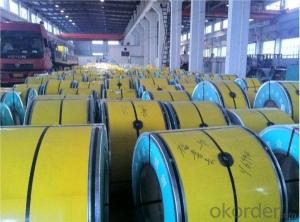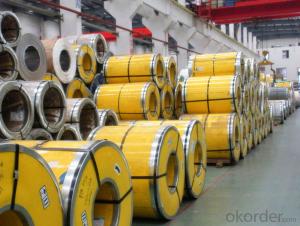Stainless Steel Coil and Sheet 304 Hot Rolled Cold Rolled High Quality
- Loading Port:
- China main port
- Payment Terms:
- TT OR LC
- Min Order Qty:
- 20 m.t.
- Supply Capability:
- 4000 m.t./month
OKorder Service Pledge
OKorder Financial Service
You Might Also Like
CHINA GOOD COLD ROLLED STAINLESS STEEL COIL AND SHEET 304
Product Details:
CR Stainless Steel Coil 304 | |
1.Standard : | JIS AISI ASTM |
2.Thickness : | 0.3-3.0mm |
3.Width: | 100-1500mm |
4.Length: | Depend on the weight |
5.MOQ: | 20ton |
6.Main Application | Building, decoration, tableware, kitchen, industrial, auto parts, etc. |
7.Third part inspection | buyer should pay for it if any |
8.Delivery Time : | within 10 days after the advance payment |
9.Packaging Detail : | Seaworthy packages or as the customers’ requirements |
Surface Treatment
2B | The surface brightness and flatness of 2B is better than 2D. Then through a special surface treatment to improve its mechanical properties, 2B could nearly satisfy comprehensive uses. |
NO.3 | Polished with abrasive belt of git#100#200,have better brightness with discontinuous coarse strait, used as inner and external ornaments for building, electrical appliances and kitchen utensils etc. |
NO.4 | Polished with abrasive belt of grit#150#180,have better brightness with discontinuous coarse stria, but thinner than NO.3, are used as bathtub buildings inner and external ornaments electrical appliances kitchen utensils and food processing equipment etc |
HL | Polished with abrasive belt of grit#150#320 on the NO.4 finish and has continuous streaks, mainly used as buildings ornaments elevators, door of building, frontal plate etc. |
BA | Cold rolled, bright annealed and skin-passed, the product have excellent brightness and good reflexivity like mirror, kitchen apparatus, ornament etc |
8K | The product have excellent brightness and prefer reflexivity can |
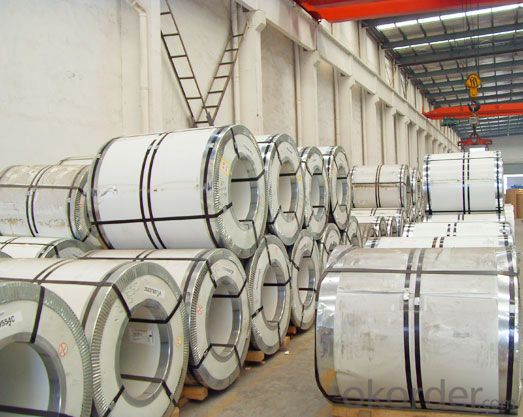
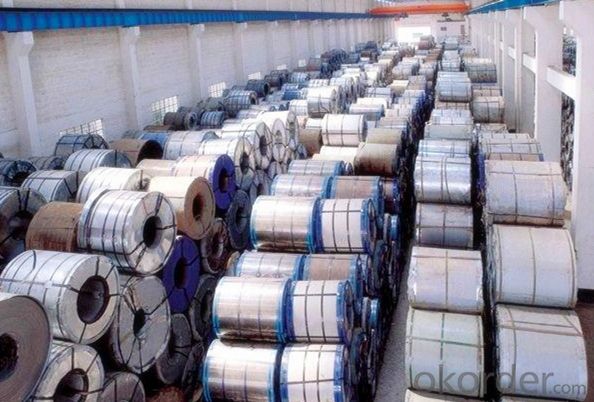
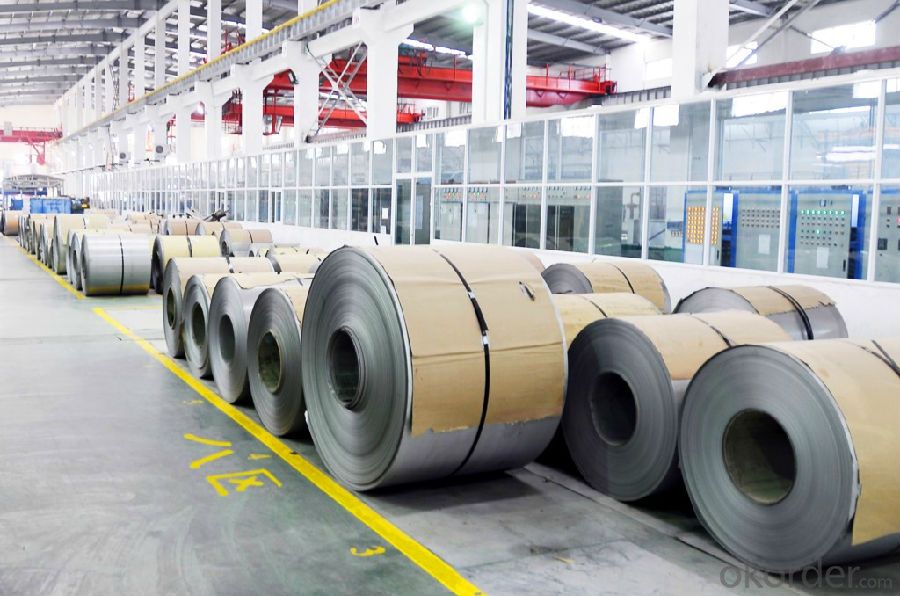
- Q:Are stainless steel strips resistant to chlorine corrosion?
- In general, stainless steel strips have a resistance to chlorine corrosion. Stainless steel is well-known for its ability to resist both corrosion and staining, making it a great choice for many applications that involve contact with chlorine. This includes swimming pool equipment, water treatment plants, and chemical processing facilities. By adding elements like chromium and nickel to stainless steel, its corrosion resistance is further enhanced. This results in the formation of a protective oxide layer on the surface of the metal, shielding it from the harmful effects of chlorine. However, it's important to note that the corrosion resistance of stainless steel can vary depending on factors such as the specific grade and composition of the alloy, as well as the concentration and temperature of the chlorine solution. Therefore, it is advisable to consult with a stainless steel expert or refer to corrosion resistance charts provided by stainless steel manufacturers to ensure that stainless steel strips are suitable for use in environments rich in chlorine.
- Q:What are the common uses of stainless steel strips in the electronics industry?
- Due to their exceptional properties and versatility, stainless steel strips find various applications in the electronics industry. One of these is their use as shielding material to minimize electromagnetic interference. This interference can have a negative impact on the performance of electronic devices, which is why stainless steel strips are utilized for their excellent electromagnetic shielding properties. They effectively prevent the leakage or absorption of electromagnetic radiation, ensuring the smooth functioning of electronic components. In addition, stainless steel strips are commonly employed as connectors in the electronics industry. Due to their high electrical conductivity and corrosion resistance, they make reliable connector pins or terminals. This allows for efficient transmission of electrical signals and ensures a durable connection between different electronic components. Furthermore, stainless steel strips are utilized in the production of springs and contacts for various electronic devices. Their exceptional elasticity and resilience make them suitable for applications where electrical contacts need to be maintained under pressure. Stainless steel strips can withstand repeated bending and stretching without losing their shape or functionality. This makes them an ideal choice for use in switches, relays, and other electronic components. Moreover, stainless steel strips are also used in the manufacturing of battery contacts. These contacts require corrosion resistance and excellent electrical conductivity to ensure the proper functioning of the battery. Stainless steel strips fulfill these requirements, providing a reliable current flow and preventing any potential damage or degradation caused by corrosion. In summary, the wide range of uses for stainless steel strips in the electronics industry includes their use as shielding material, connectors, springs, contacts, and battery contacts. Their exceptional properties, such as corrosion resistance, electrical conductivity, and elasticity, make them an ideal choice for various electronic applications.
- Q:How do stainless steel strips resist erosion in abrasive environments?
- Due to its unique composition and properties, stainless steel strips exhibit exceptional resistance to erosion in abrasive environments. The presence of chromium in the alloy is the key factor that enables this resistance. When exposed to the environment, chromium forms a thin layer of chromium oxide on the surface of the steel. This layer acts as a barrier, protecting the steel from corrosion and erosion. This chromium oxide layer is remarkably stable and firmly adheres to the steel surface, effectively preventing further oxidation and corrosion. As a result, the steel is sealed off from the surrounding environment, including abrasive particles, moisture, and other contaminants that could potentially cause erosion. Furthermore, stainless steel strips often incorporate additional alloying elements like nickel and molybdenum, which further enhance their erosion resistance. These elements contribute to the formation of a passive film, providing an extra layer of protection against abrasion. Moreover, stainless steel strips are engineered to possess high hardness and strength, enabling them to withstand the impact and friction caused by abrasive particles without significant damage or erosion. Additionally, the smooth surface finish of stainless steel strips reduces the likelihood of particles getting trapped or lodged in microscopic crevices, thereby minimizing the potential for erosion. This smoothness also facilitates effortless cleaning and maintenance, ensuring the durability of the stainless steel strips in abrasive environments. In conclusion, stainless steel strips effectively resist erosion in abrasive environments through the formation of a protective chromium oxide layer, their high hardness and strength, and their smooth surface finish. These factors combine to provide excellent resistance against corrosion, mechanical wear, and the harmful effects of abrasive particles.
- Q:Can stainless steel strips be used for decorative purposes?
- Yes, stainless steel strips can be used for decorative purposes. They are often used in architecture, interior design, and various decorative applications due to their sleek and modern appearance. Additionally, stainless steel is highly durable, resistant to corrosion, and easy to clean, making it an excellent choice for decorative purposes.
- Q:Can stainless steel strips be used in food processing equipment?
- Food processing equipment can indeed make use of stainless steel strips. Within the food industry, stainless steel is a favored choice due to its numerous desirable qualities. Its exceptional corrosion resistance is particularly crucial in an environment where contact with both food and water is common. Furthermore, stainless steel is easy to clean and sanitize, making it well-suited for food processing equipment that requires frequent washing. In addition, stainless steel does not react with food, ensuring that no harmful substances are leached into the processed products. Its durability and strength also guarantee that the equipment can withstand the rigorous demands of the food processing industry. In summary, stainless steel strips are a dependable and secure option for food processing equipment.
- Q:What are the different types of surface finishes available for stainless steel strips?
- There are several different types of surface finishes available for stainless steel strips, each offering unique properties and aesthetic appeal. Some of the most common types include: 1. No. 1 Finish: This is a hot-rolled, annealed, and pickled finish that exhibits a rough and dull appearance. It is commonly used for applications where a rough texture is desired or for further processing. 2. No. 2B Finish: This finish is achieved by cold-rolling stainless steel strips and subsequently annealing them in a controlled atmosphere. It results in a smooth, reflective surface that is suitable for general applications requiring a bright and uniform appearance. 3. No. 2D Finish: Similar to the No. 2B finish, this surface finish is achieved by cold-rolling stainless steel strips and annealing them in a hydrogen atmosphere. It provides a slightly duller and less reflective surface compared to the No. 2B finish. 4. No. 3 Finish: Also known as a ground finish, it is achieved by mechanically polishing the surface of stainless steel strips using abrasive belts or brushes. This finish creates a semi-reflective appearance with a linear grain pattern. 5. No. 4 Finish: This is a popular finish for decorative applications, achieved through the use of polishing belts or brushes. It produces a brushed appearance with a consistent grain pattern, providing a satin-like finish. 6. No. 6 Finish: This is a high-gloss finish that is obtained through polishing stainless steel strips with successively finer abrasives. It offers a reflective and mirror-like appearance, making it suitable for decorative applications. 7. No. 7 Finish: Similar to the No. 6 finish, this is achieved by polishing stainless steel strips with successively finer abrasives. However, it is then buffed to create a highly reflective finish with enhanced clarity and depth. 8. No. 8 Finish: Often referred to as a mirror finish, this is the highest level of polish available for stainless steel strips. It is achieved through polishing with extremely fine abrasives, resulting in a flawless, highly reflective, and mirror-like surface. 9. Bead Blasting Finish: This finish is achieved by propelling small glass beads or steel shots at the surface of stainless steel strips. It creates a uniform matte appearance with a slightly rough texture. 10. Electropolished Finish: This is a specialized finish that involves the use of an electrolytic bath to remove a controlled amount of metal from the surface of stainless steel strips. It results in a smooth, bright, and clean finish with enhanced corrosion resistance. These various surface finishes offer a range of appearances and functional properties, allowing stainless steel strips to be utilized in a wide array of applications, from architectural and decorative to industrial and sanitary.
- Q:Are stainless steel strips resistant to scaling and oxidation?
- Yes, stainless steel strips are resistant to scaling and oxidation. This is due to the high levels of chromium present in stainless steel, which forms a protective layer on the surface of the material. This layer, known as a passive film, prevents the steel from reacting with oxygen in the air and helps to prevent corrosion and scaling. Additionally, stainless steel also contains other alloying elements such as nickel and molybdenum, which further enhance its resistance to oxidation and scaling. Therefore, stainless steel strips are widely used in various industries where corrosion resistance is crucial, such as in the manufacturing of kitchen appliances, automotive parts, and chemical processing equipment.
- Q:Are stainless steel strips suitable for water treatment applications?
- Stainless steel strips, indeed, prove to be appropriate for applications in water treatment. Stainless steel boasts exceptional resistance against corrosion and can endure exposure to water and the diverse chemicals commonly utilized in water treatment procedures. Its extraordinary strength and durability render it fitting for implementation in equipment employed in water treatment, such as filters, screens, tanks, and pipes. Moreover, stainless steel exhibits hygienic properties and can be easily cleaned, a crucial aspect in upholding water quality. Its ability to resist bacterial growth and endure high temperatures further establish it as a dependable option for water treatment applications.
- Q:Are stainless steel strips suitable for appliance handles?
- Yes, stainless steel strips are highly suitable for appliance handles. Stainless steel is known for its durability, corrosion resistance, and sleek appearance, making it an ideal material for handles that are regularly used and exposed to moisture. Moreover, stainless steel can easily be cleaned and maintained, ensuring the longevity and cleanliness of the appliance handles.
- Q:Can stainless steel strips be used in oil and gas industries?
- Yes, stainless steel strips can be used in oil and gas industries. Stainless steel is known for its excellent resistance to corrosion, high strength, and durability, making it an ideal material for various applications in the oil and gas sector. Stainless steel strips can be used for fabricating pipes, tubes, fittings, valves, heat exchangers, and other components that are exposed to harsh operating conditions, including corrosive environments, high temperatures, and high pressures. Additionally, stainless steel offers good weldability and formability, allowing for easy fabrication and installation in oil and gas facilities. Overall, stainless steel strips provide the necessary reliability and performance required in the oil and gas industry.
1. Manufacturer Overview |
|
|---|---|
| Location | |
| Year Established | |
| Annual Output Value | |
| Main Markets | |
| Company Certifications | |
2. Manufacturer Certificates |
|
|---|---|
| a) Certification Name | |
| Range | |
| Reference | |
| Validity Period | |
3. Manufacturer Capability |
|
|---|---|
| a)Trade Capacity | |
| Nearest Port | |
| Export Percentage | |
| No.of Employees in Trade Department | |
| Language Spoken: | |
| b)Factory Information | |
| Factory Size: | |
| No. of Production Lines | |
| Contract Manufacturing | |
| Product Price Range | |
Send your message to us
Stainless Steel Coil and Sheet 304 Hot Rolled Cold Rolled High Quality
- Loading Port:
- China main port
- Payment Terms:
- TT OR LC
- Min Order Qty:
- 20 m.t.
- Supply Capability:
- 4000 m.t./month
OKorder Service Pledge
OKorder Financial Service
Similar products
New products
Hot products
Related keywords
